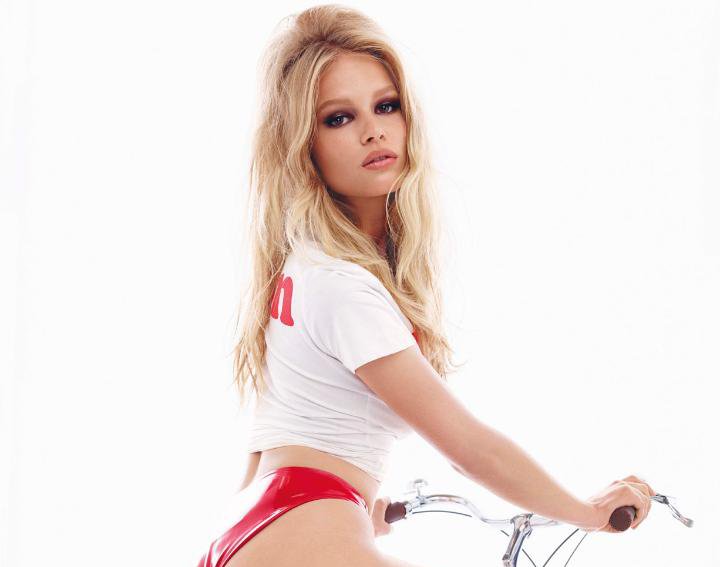The Pirelli Calendar is published by the UK subsidiary of the global brand and is known to be one of the most sought after trade calendars in the world. Since the first Pirelli Calendar which came out in 1963, this limited edition publication has become a much awaited event. For the models featured, this is an honour.
The Pirelli Calendar Over the Years

Image Source
Over the years, the calendar has featured artistic nudes, top models and celebrities. The calendar has been provocative, avant-garde, imaginative and something of a trend setter. Model Anna Ewers in last year’s edition typifies what is expected of Pirelli calendars.

Image Source
This behind the scenes picture of the 2014 calendar shoot also signifies what the calendar has represented through the years.

Image Source
As this smoking hot image above indicates, the Pirelli calendar girls are known more for their hotness quotient than any other type of quotient.
The Pirelli Calendar 2016
Not this year though. The calendar is a departure from the norm in that it features real women; women who are achievers in various fields. It is also a departure from the norm that the photos are shot by the iconic photographer Annie Leibovitz. The calendar will feature 12 artistic portraits of achievers from various fields, women of all shapes, sizes and ages rather young, perfect looking, ultra glamorous models.

Image Source
A comfortable roll with stomach fat. Promoting being comfortable with ones’s body no matter how it is.

Image Source
Laugh lines and wrinkles, showing that beauty is enhanced by these things.

Image Source
Mature faces, showing the traces of the test that time has taken from them.

Image Source
Celebrating body types that defy conventional notions of ‘beauty’.

Image Source
Highlighting gray hair as a sign of respect for real experience taught by life and time.
These are not the things the calendar has been known for in the past. For an iconic publication such as this to embrace real women: athlete, inventor, director, artist… this perhaps indicates a shift in popular perceptions; an indication that the concept of ‘beauty’ can perhaps be widened to include women who look more ‘real’, like ‘us’ and less like the flawless, airbrushed, photoshopped visions, that typify conventional stereotypes of beauty.
Author: Reena Daruwalla





